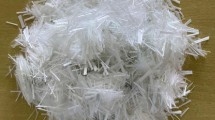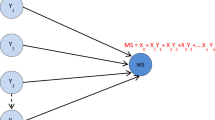Abstract
Asphalt concrete has long been the major material used in pavement engineering. As a result, improving the quality of asphalt concrete for better performance and longer durability has remained a research priority. The purpose of this research is to evaluate the potential of soft computing-based models for predicting the Marshall Stability of plastic waste asphalt mix, such as Random Forest (RF), Random Tree (RT), Bagging RF, Bagging RT, and artificial neural networks (ANN)-based models. Three statistical indices are used to assess each model's performance with various input variables, such as bitumen content (BC), plastic content (PC), bitumen grade (VG), and plastic size (PS), to derive the Marshall Stability (MS). The efficacy of the used models was evaluated using three statistical indices: the coefficient of correlation (CC), the mean absolute error (MAE), and root-mean-square error (RMSE). With CC values of 0.942 and 0.8957, MAE values of 1.0591 and 1.4736, and RMSE values of 1.5121 and 2.2225 for both the training and testing stages, the performance evaluation results showed that the RF-based model outperformed all other models for predicting the Marshall Stability (MS) of asphalt concrete using plastic waste. The MS of the asphalt mix is a key outcome of the sensitivity analysis pointing to the size of the plastic as an important parameter in the case of plastic waste.







Similar content being viewed by others
Data availability
All the data associated with the presented research can be shared upon request.
References
Abu Abdo AM, Jung SJ (2020) Investigation of reinforcing flexible pavements with waste plastic fibers in Ras Al Khaimah, UAE. Road Mater Pavement Design 21(6):1753–1762
Adeloye AJ, Rustum R, Kariyama ID (2012) Neural computing modeling of the reference crop evapotranspiration. Environ Model Softw 29(1):61–73
Alade O, Shehri DA, Mahmoud M, Sasaki K (2019) Viscosity–temperature–pressure relationship of extra-heavy oil (Bitumen): empirical modelling versus artificial neural network (ANN). Energies 12(12):2390. https://doi.org/10.3390/en12122390
Al-Hadidy AI, Yi-qiu T (2008) Modified rubberized stone matrix asphalt for Nineveh roads. J Harbin Inst Technol 15(3):356–360
Awan HH, Hussain A, Javed MF, Qiu Y, Alrowais R, Mohamed AM, Fathi D, Alzahrani AM (2022) Predicting marshall flow and marshall stability of asphalt pavements using multi expression programming. Buildings 12(3):314
Chen Z, Gong Z, Jiao Y, Wang Y, Shi K, Wu J (2020) Moisture stability improvement of asphalt mixture considering the surface characteristics of steel slag coarse aggregate. Constr Build Mater 251:118987
Das S, Pal P, Singh RM (2015) Prediction of concrete mix proportion using ANN technique. Int Res J Eng Technol 2(5):820–825
Fathi A, Mazari M, Saghafi M, Hosseini A, Kumar S (2019) Parametric study of pavement deterioration using machine learning algorithms. Airfield and highway pavements 2019: innovation and sustainability in highway and airfield pavement technology. American Society of Civil Engineers, Reston, VA, pp 31–41
Gautam PK, Kalla P, Jethoo AS, Agrawal R, Singh H (2018) Sustainable use of waste in flexible pavement: a review. Constr Build Mater 180:239–253
Golafshani EM, Behnood A (2018) Application of soft computing methods for predicting the elastic modulus of recycled aggregate concrete. J Clean Prod 176:1163–1176
Hamoud A, Hashim AS, Awadh WA (2018) Predicting student performance in higher education institutions using decision tree analysis. Int J Interact Multimed Artif Intell 5:26–31
Karballaeezadeh N, Ghasemzadeh Tehrani H, Mohammadzadeh Shadmehri D, Shamshirband S (2020) Estimation of flexible pavement structural capacity using machine learning techniques. Front Struct Civ Eng 14:1083–1096
Kowalski KJ, Król J, Radziszewski P, Casado R, Blanco V, Pérez D, Viñas VM, Brijsse Y, Frosch M, Le DM, Wayman M (2016) Eco-friendly materials for a new concept of asphalt pavement. Transp Res Procedia 14:3582–3591
Kumar N, Adeloye AJ, Shankar V, Rustum R (2020) Neural computing modeling of the crop water stress index. Agric Water Manag 239:106259
Kumar M, Kumari A, Kumar D, Al-Ansari N, Ali R, Kumar R, Kumar A, Elbeltagi A, Kuriqi A (2021) The superiority of data-driven techniques for estimation of daily pan evaporation. Atmosphere 12(6):701
Machová K, Barcak F, Bednár P (2006) A bagging method using decision trees in the role of base classifiers. Acta Polytechnica Hungarica 3(2):121–132
Mai HVT, Nguyen TA, Ly HB, Tran VQ (2021a) Investigation of ANN model containing one hidden layer for predicting compressive strength of concrete with blast-furnace slag and fly ash. Adv Mater Sci Eng. https://doi.org/10.1155/2021/5540853
Mai HVT, Nguyen TA, Ly HB, Tran VQ (2021b) Prediction compressive strength of concrete containing GGBFS using random forest model. Adv Civ Eng. https://doi.org/10.1155/2021/6671448
Menaria Y, Sankhla R (2015) Use of waste plastic in flexible pavements-green roads. Open J Civ Eng 5(03):299
Mir AH (2015) Use of plastic waste in pavement construction: an example of creative waste management. J Eng 5(2):57–67
Mishra B and Gupta MK (2020) Use of plastic waste in bituminous mixes by wet and dry methods. In: Proceedings of the Institution of Civil Engineers-Municipal Engineer, Vol. 173, No. 2, pp. 87–97. Thomas Telford Ltd.
Montavon G (2020) Introduction to neural networks. Machine learning meets quantum physics. Springer, Cham, pp 37–62
Nabipour N, Karballaeezadeh N, Dineva A, Mosavi A, Mohammadzadeh SD, Shamshirband S (2019a) Comparative analysis of machine learning models for prediction of remaining service life of flexible pavement. Mathematics 7(12):1198
Nouri M, Sihag P, Salmasi F, Abraham J (2021) Prediction of homogeneous earthen slope safety factors using the forest and tree based modelling. Geotech Geol Eng 39(4):2849–2862. https://doi.org/10.1007/s10706-020-01659-x
Pal M (2005) Random forest classifier for remote sensing classification. Int J Remote Sens 26(1):217–222
Priyanka A (2021) Analysis in the application of plastic waste as a constructive material in flexible pavement. Turk J Comput Math Educ (TURCOMAT) 12(7):166–170
Rahman MT, Hainin MR, Bakar WAWA (2017) Use of waste cooking oil, tire rubber powder and palm oil fuel ash in partial replacement of bitumen. Constr Build Mater 150:95–104
Rajput PS, Yadav RK (2016) Use of plastic waste in bituminous road construction. Int J Sci Technol Eng 2(10):509–513
Shaikh A, Khan N, Shah F, Kale G and Shukla D (2017) Use of plastic waste in road construction. Int J Adv Res Dev 2(5)
Shaqadan A (2016) Prediction of concrete mix strength using random forest model. Int J Appl Eng Res 11:11024–11029
Sharma N, Thakur MS, Sihag P, Malik MA, Kumar R, Abbas M, Saleel CA (2022) Machine learning techniques for evaluating concrete strength with waste marble powder. Materials 15(17):5811
Sharma N, Thakur MS, Upadhya A, Sihag P (2023) Assessment of flexural strength of concrete with marble powder applying soft computing techniques. J Build Pathol Rehabil 8(1):4
Sihag P, Dursun OF, Sammen SS, Malik A, Chauhan A (2021) Prediction of aeration efficiency of parshall and modified venturi flumes: application of soft computing versus regression models. Water Supply 21(8):4068–4085
Sonebi M, Grünewald S, Cevik A, Walraven J (2016) Modelling fresh properties of self-compacting concrete using neural network technique. Comput Concr 18(4):903–920
Tapkın S, Çevik A, Uşar Ü (2010) Prediction of Marshall test results for polypropylene modified dense bituminous mixtures using neural networks. Expert Syst Appl 37(6):4660–4670
Topçu İB, Boğa AR, Hocaoğlu FO (2009) Modeling corrosion currents of reinforced concrete using ANN. Autom Constr 18(2):145–152
Trimbakwala A (2017) Plastic roads use of waste plastic in road construction. Int J Sci Res Publ 7(4):137–139
Tu MC, Shin D and Shin D (2009) A comparative study of medical data classification methods based on decision tree and bagging algorithms. In: 2009 Eighth IEEE International Conference on Dependable, Autonomic and Secure Computing. IEEE, p. 183–187
Upadhya A, Thakur MS, Sihag P, Kumar R, Kumar S, Afeeza A, Afzal A, Saleel CA (2022a) Modelling and prediction of binder content using latest intelligent machine learning algorithms in carbon fiber reinforced asphalt concrete. Alex Eng J 65:131–49
Upadhya A, Thakur MS, Sharma N, Sihag P (2022b) Assessment of soft computing-based techniques for the prediction of Marshall stability of asphalt concrete reinforced with glass fiber. Int J Pavement Res Technol 15(6):1366–1385
Upadhya A, Thakur MS, Sihag P (2022c) Predicting Marshall stability of carbon fiber-reinforced asphalt concrete using machine learning techniques. Int J Pavement Res Technol. https://doi.org/10.1007/s42947-022-00223-5
Upadhya A, Thakur MS, Mashat A, Gupta G, Abdo MS (2022d) Prediction of binder content in glass fiber reinforced asphalt mix using machine learning techniques. IEEE Access 10:33866–33881
Vasseghian Y, Ahmadi M, Joshaghani M (2016) Ultrasound assisted ash and sulphur removal from bitumen using column flotation technique experimental, RSM and ANN methods in modelling and optimization of process. Iran J Sci Technol Trans Sci. https://doi.org/10.1007/s40995-016-0068-x
Vasudevan R, Sekar ARC, Sundarakannan B, Velkennedy R (2012) A technique to dispose waste plastics in an eco-friendly way–application in construction of flexible pavements. Constr Build Mater 28(1):311–320
Veeramanikandan V and Jeyakarthic M (2019) A futuristic framework for financial credit score prediction system using PSO based feature selection with random tree data classification model. In: International Conference on Smart Systems and Inventive Technology (ICSSIT). IEEE, p 826–831
Author information
Authors and Affiliations
Contributions
BK wrote the manuscript text and prepared figures and tables. NK reviewed the manuscript.
Corresponding author
Ethics declarations
Conflict of interest
The authors declare no competing interests.
Additional information
Publisher's Note
Springer Nature remains neutral with regard to jurisdictional claims in published maps and institutional affiliations.
Rights and permissions
Springer Nature or its licensor (e.g. a society or other partner) holds exclusive rights to this article under a publishing agreement with the author(s) or other rightsholder(s); author self-archiving of the accepted manuscript version of this article is solely governed by the terms of such publishing agreement and applicable law.
About this article
Cite this article
Kumar, B., Kumar, N. Assessment of Marshall Stability of asphalt concrete with plastic waste using soft computing techniques. Multiscale and Multidiscip. Model. Exp. and Des. 6, 733–745 (2023). https://doi.org/10.1007/s41939-023-00180-x
Received:
Accepted:
Published:
Issue Date:
DOI: https://doi.org/10.1007/s41939-023-00180-x




